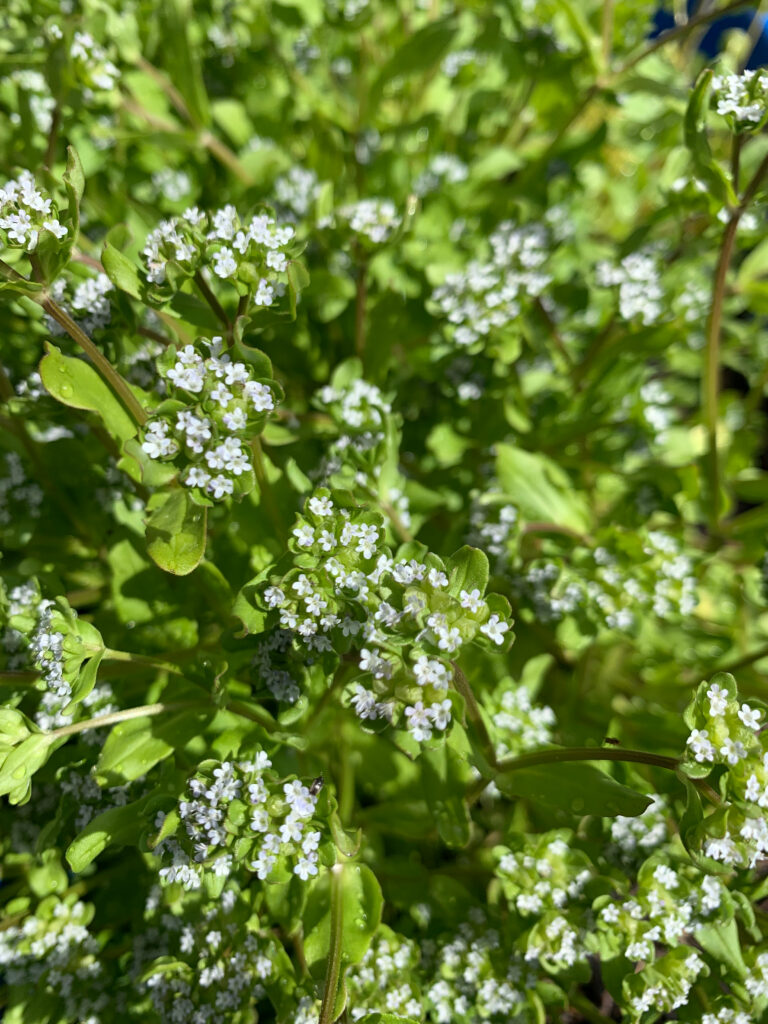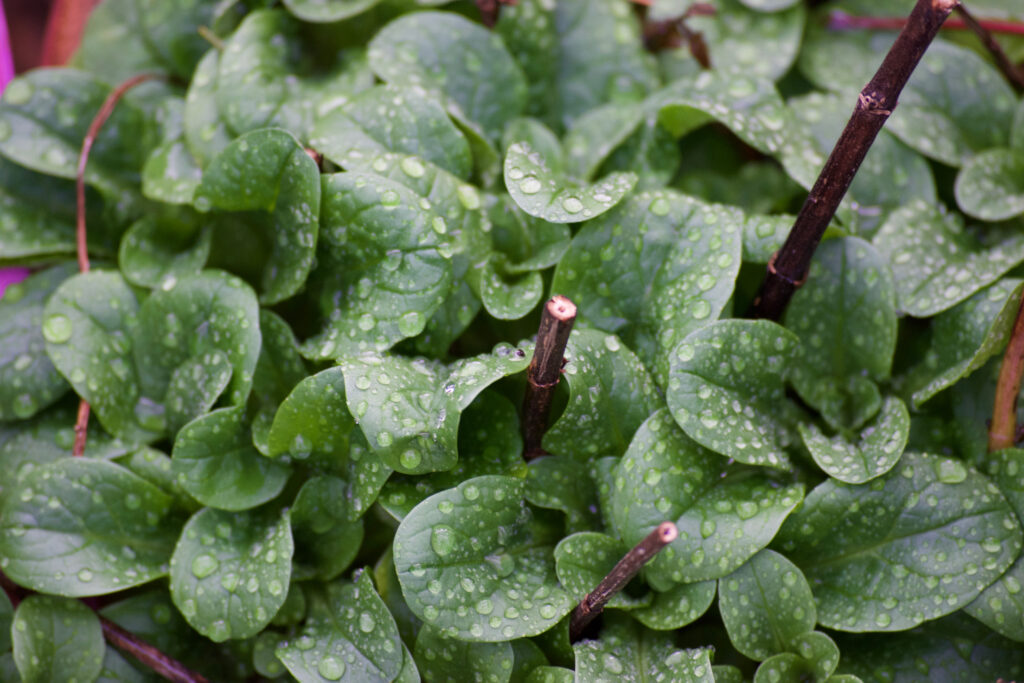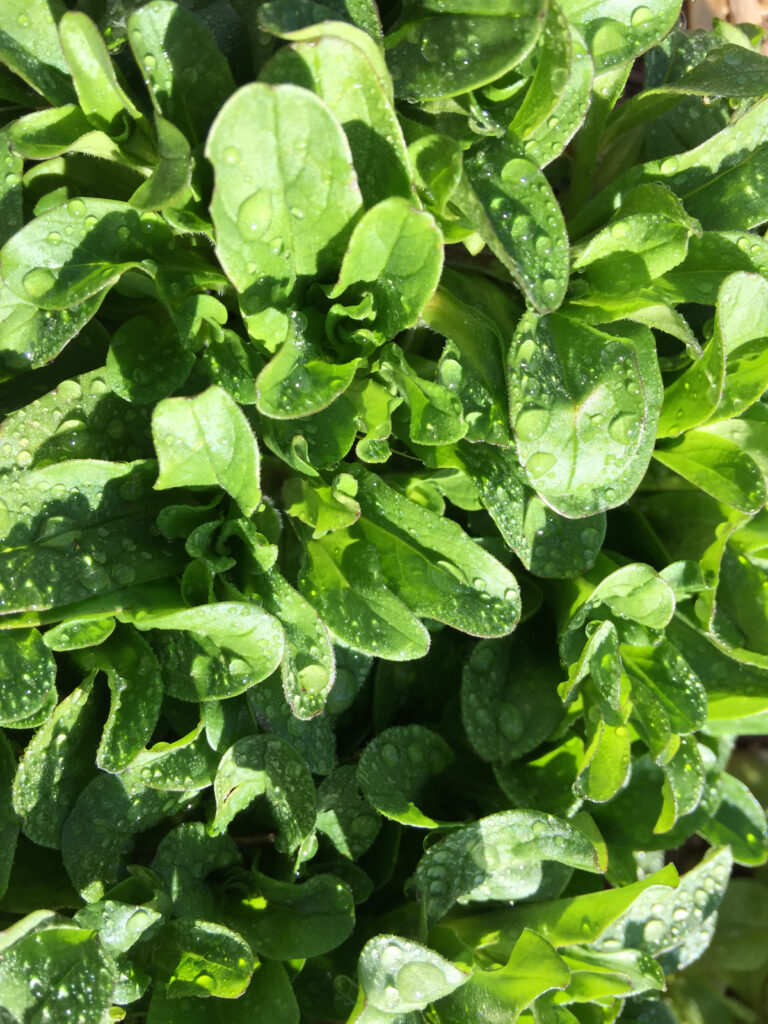Botanical name : Valerianella locusta
Common name : Corn Salad, Mâche, Lambs Lettuce, Cress (generic European term)
Intermediate difficulty for seed saving
Lifecycle: Annual
Pollination: Insect pollinated
Mating system: Perfect, self-fertile
Suggested spacing: Same as for eating production
Seed specific requirements: None
Isolation distance: 250 m if keeping a named variety, otherwise none required
Population size: 50 plants or more (approx 1 sq. metre)
Seed maturity: When the bolls open to release the seed
Processing method: Dry processing
Expected seed viability: 3 years
Images



Growing for seed
Plants are usually grown for winter eating in southern Australia as they tend to bolt to seed in hot weather. When grown as a seed crop the plants should not be harvested for eating as this may reduce their vigour and potential seed production.
Corn salad is grown for seed in quite large populations to ensure its genetic stability. However, they are small plants and the suggested 50 plants would only require about one square metre or so of bed space.
As corn salad flowers are cross pollinated by insects they should be isolated by 250 m from other flowering corn salad varieties if a particular variety is intended to be saved. Many home gardeners in Australia are not growing a named variety with specific traits that need to be kept true-to-type when seed saving. In this case no isolation is required.
Selection
Leaf size and shape, along with resistance to bolting are the main selection criteria along with plant vigour and rosette size.
Harvest
Corn salad seed ripens continuously over a long period. Determining the best time to harvest the whole plant can be difficult. Seed is ripe when their containers split open. Seed shatters easily into the garden so harvesting needs to be done promptly when seed is ripe and also carefully so that seed is not lost onto the ground. Place cut plants and stems onto a tarp or into a mesh bag to finish drying. Sheets and pillowcases can be repurposed for this use too.
Many gardeners choose to allow corn salad to self-seed rather than collecting seed each year.
Processing
As the seed falls freely from the plant when ripe threshing is a very easy process. Dried plant material can simply be shaken or lightly rubbed to dislodge the seeds. Sieving and winnowing are used to separate the seed from any unwanted plant material.
Contributors
Liz Worth, Nellie Pryke
